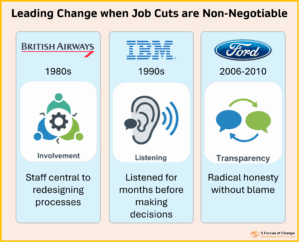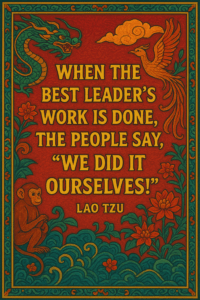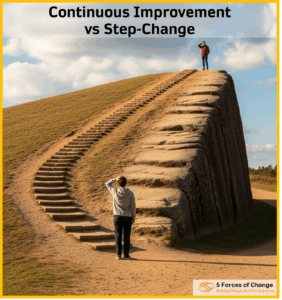 Do people always resist change? No, of course not. Witness the queues outside Apple stores full of eager people hoping to be the first to buy the latest iGadget. They can’t get change quick enough.
Do people always resist change? No, of course not. Witness the queues outside Apple stores full of eager people hoping to be the first to buy the latest iGadget. They can’t get change quick enough.
Ah, but isn’t the latest iPhone just an example of ‘good’ change? What about ‘bad’ change? Well, the fact is ‘good’ change is in the eye of the beholder. I am not a fan of Apple, and there are millions like me who will steer clear of the iWatch. In reality, it is hard to separate ‘good’ and ‘bad’ change.
At work in particular, change is often perceived as negative. An organisation restructure will strike fear into many as they anticipate job losses or losing out in some other way. But some organisation manage to change and innovate all the time without falling apart. Perhaps these organisations are full of ‘change junkies’? It’s possible, but the more practical reason for their success is the way they manage change.
Your chances of success with change boil down to a combination of the type of change you are attempting to make (its scale and impact) and your ability to lead that change effectively. The odds will be further stacked against you (or in your favour) if your organisation has a history of failed change (or successful change).
What you need are leaders that reduce people’s uncertainty, give clarity of purpose, involve them in change, help them let go of the past and support them through the learning curve of change.
It’s not not so much what you do as the way that you do.
For more on this www.5forcesofchanges.com






